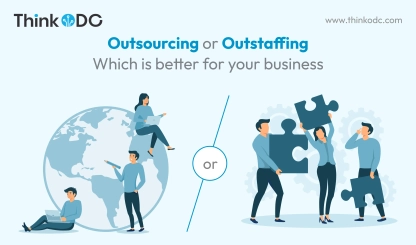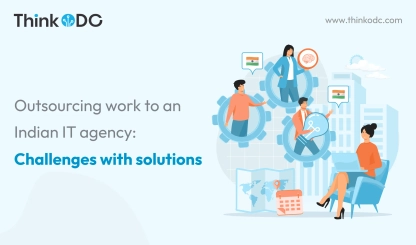The software development landscape is continuously shifting, driven by new technologies and evolving business priorities. As companies strive to build better software faster, many are turning to offshore software development to reduce costs while still accessing top talent.
If you’re considering an offshore partner, it’s essential to understand the latest trends shaping offshore development in 2024 and beyond. This will allow you to find an offshore provider poised to deliver quality solutions both now and in the years ahead.
In this post, we’ll explore the growth of the offshore development market and highlight seven major trends to watch in the offshore development space.
Let’s dive in!
The Growth of the Offshore Software Development Market
Before delving into the top offshore software development trends, it’s important to understand the growth trajectory for the offshore development industry. Driven by increasing outsourcing and innovative technologies, the global offshore software development market size is expected to reach $283,457.5 million by 2028.
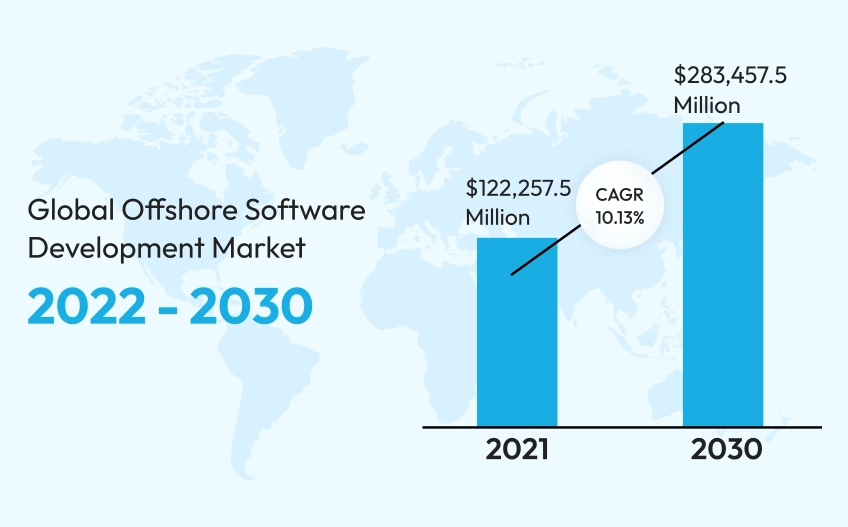
Asia-Pacific regions, especially India and Southeast Asia, are experiencing particularly high growth rates due to their abundance of IT talent. As more companies shift budgets away from in-house development to outsourced partnerships, these regions provide immense opportunities.
When evaluating potential offshore software vendors, technical capabilities should be carefully assessed along with cultural alignment, communication skills, and delivery reliability. The accelerated growth of this market means more providers are emerging around the world for companies to choose from.
By determining the key factors that impact success, organizations can ensure they select a long-term Offshore development service provider that enables their strategic goals.
Top 7 Offshore Software Development Trends
Let’s look at 7 major trends that will shape the offshore development landscape in 2024:
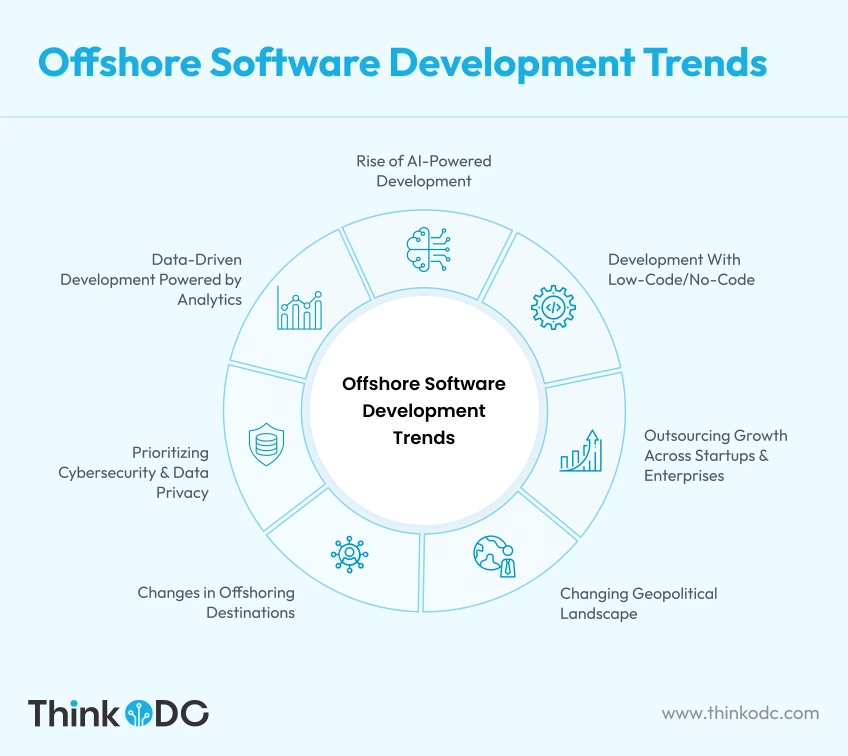
Trend 1: The Rise of AI-Powered Development
Of all the technology trends impacting global industries, artificial intelligence is certainly among the most revolutionary.
The clear reason behind that is its adoption.
The worldwide AI market is expected to be worth more than $500 billion by 2024.
Also, According to the McKinsey report from 2022, half of the world's largest businesses have incorporated AI into their operations.
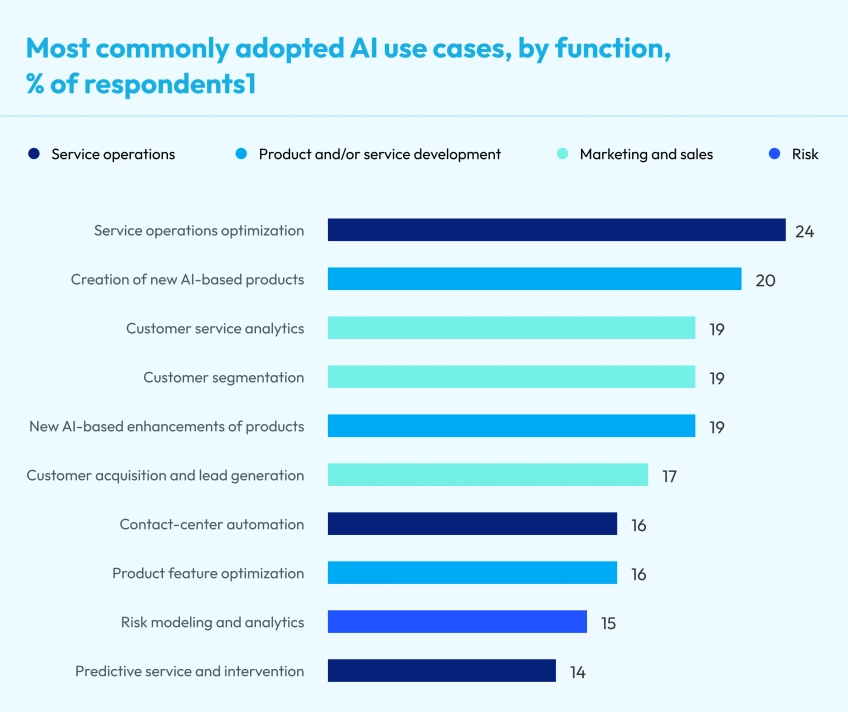
The rapid evolution of AI is transforming software development by automating repetitive coding tasks and optimizing design. Rather than replace developers entirely, AI empowers programmers to focus their skills and domain knowledge on higher complexity undertakings.
As AI continues to mature, the offshore software development team will leverage intelligent algorithms to accelerate release velocity and boost quality. This amplification of human capacities through AI partnership shrinks project delivery timelines down. That speed empowers product builders to get to market faster – seizing opportunities before competitors. And because AI learns from data, systems keep improving at exponential rates.
Trend 2: Development With Low-Code/No-Code
Low-code/no-code application development platforms are disrupting traditional coding-intensive approaches by enabling faster app building leveraging drag-and-drop interfaces and model-driven logic. They empower non-technical citizen developers to build software applications rapidly without extensive programming knowledge.
As per Gartner, by 2024 over 65% of app development activity will shift to these low-code platforms. Offshore partners are building capabilities around popular no-code/low-code platforms like Appian, Mendix, Salesforce Lightning, Zoho Creator for enabling rapid delivery of software projects.
According to Gartner, Inc., the global market for low-code development technologies is expected to reach $26.9 billion in 2023, a 19.6% increase from 2022.
When outsourcing projects, companies must assess a partner's expertise across leading no-code tools, pre-built components & templates, integration capabilities with legacy systems, and ability to ensure scalability & security of no-code apps post deployment.
Trend 3: Outsourcing Growth Across Both Startups and Enterprises
From early-stage startups to global enterprises, businesses of all sizes are embracing outsourced software development as a core pillar of success.
In fact, 58% of technology companies already leverage offshore talent, with 75% saying it’s extremely vital for competitiveness. And 2022 saw record-breaking funding flow to IT service firms.
The drivers behind this outsourcing boom span cost optimization, productivity gains, and risk mitigation. Top offshore firms build specialized expertise across domains from fintech and medtech to e-commerce and logistics. Tapping into these concentrated global talent pools provides targeted solutions impossible to replicate in-house.
By leveraging access to larger resource pools abroad, offshore software development companies overcome domestic hiring challenges to fuel faster growth. Outsourced models also introduce flexibility since teams can scale up or down without long-term overheads. Rather than weathering fixed costs, businesses only pay for active needs.
The expanding adoption will accelerate in 2024 as offshore providers enable next-gen innovation. But smoothly onboarding partners requires aligning desired outcomes, workflows, tools, metrics and milestones between clients and vendors.
Read More: A Guide to Launching Your Business with an Offshore Team
Trend 4: Changing Geopolitical Landscape
Geopolitics will play an outsized role in shaping offshore outsourcing decisions as we progress towards 2024. Issues like trade relationships, data protectionism, economic stability, cross-border taxation policies can directly impact location selection strategies.
For example, worsening tensions between the United States and China have prompted companies to diversify their outsourcing models beyond China. Top companies are now considering alternative offshore destinations such as India.
Businesses must continuously monitor geopolitical scenarios across current & potential offshore locations to assess viability, anticipate risks and have contingency plans in place. Market entry/exit costs, technology infrastructure maturity, language skills will need careful evaluation against political headwinds.
Managing operations through potential upheavals like civil unrest, conflicts etc should be planned proactively when outsourcing mission critical activities to volatile regions.
Trend 5: Changes in Offshoring Destinations
India, China, and European countries have traditionally been preferred offshore software development hubs. However, countries across Southeast Asia, Africa, and Latin America are now evolving as attractive alternatives.
Note: According to Statista, India was rated the most attractive destination for offshore business services in 2021.
Nearshore regions like Mexico and Eastern Europe are also gaining favor owing to their cultural affinity and geographic proximity to key markets.
Destinations like Vietnam, Indonesia, Kenya, Chile, etc. offer abundant technical talent pools, cost competitiveness, favorable regulatory policies, and relatively lower geo-political volatility.
However, adequate evaluation regarding infrastructure readiness, English proficiency, timezone overlaps, etc. becomes vital while expanding to such emerging regions.
When exploring new offshore destinations, companies must look beyond cost and prioritize the infrastructure of offshore development centers, talent availability, data regulations, legal systems, and cultural fit. Understanding regional instability allows organizations to detect signals early and adapt before disruption.
Read More: Which is better for your project: offshore or nearshore outsourcing?
Trend 6: Prioritizing Cybersecurity & Data Privacy
As enterprises across industries undergo exponential digital growth, cyber risks have also increased manifold. Attack vectors have increased with highly connected systems, more endpoints and extensive cloud usage. Data security has become paramount with highly sensitized information traversing global boundaries over complex technology infrastructure.
Leading offshore providers invest significantly in cybersecurity infrastructure like firewalls, threat monitoring systems, access controls, data encryption and regular security auditing. Many countries, such as India, have strict data protection laws which outsourcing partners must comply with.
Businesses outsourcing product development or other IP sensitive functions must review partner cyber maturity comprehensively before engagement. Assessment areas should cover technology security posture, processes for access management, incidence response systems, employee training among other aspects. Regulatory compliance viz GDPR, CCPA must also be validated.
Trend 7: Data-Driven Development Powered by Analytics
Data sits right at the heart of digital transformation supporting informed decision making and driving innovation across business functions. Within the software development realm, analytics and data-driven insights are being leveraged extensively to understand user needs, achieve speed to market, enhance quality and optimize product-market fit on an ongoing basis.
Offshore partners have strong data science capabilities comprising modern data platforms, analytical tools and cross-functional talent to seamlessly embed data practices within software development lifecycles.
Key focus areas include - gathering data from production systems, building AI models leveraging user telemetry, generating code optimization recommendations using code quality metrics, applying statistical analysis for estimating project risks etc.
When partnering, businesses must assess analytics expertise across the scope covering – technology infrastructure, talent skills, governance processes, data security and legal compliance. Analytics success necessitates alignment of offshore data teams with onshore product owners through consistent feedback loops.
Conclusion
The demand for strategic offshore software development partnerships will continue to grow as companies double down on digital transformation and innovation. With newer sourcing models expected to gain prominence, businesses must stay tuned with outsourcing trends to build resilient engagement strategies aligned with long term objectives.
Offshore partners must continually invest in specialized capabilities around AI/ML, cybersecurity, emerging development platforms to remain competitive. Location selection consideration will expand beyond traditional hubs, necessitating evaluation of unique location specific trade-offs.
The political climate, infrastructure maturity, legal landscapes will also garner more attention in conjunction with cost and talent availability. Overall, there is no one-size-fits all strategy - by maintaining flexibility and making informed data backed decisions, businesses can thrive amidst the complexity of modern outsourcing ecosystems.
If you want to leverage these software development trends and thrive, partner with ThinkODC and hire dedicated offshore developers who are well-versed in the latest technologies and trends, ensuring your projects align with the evolving landscape of software development.


